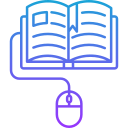Integrating Digital Literacy in Educational Curricula
Chosen theme: Integrating Digital Literacy in Educational Curricula. Welcome to a practical, human-centered guide for weaving digital skills into everyday learning. Explore stories, strategies, and ready-to-use ideas that help students think critically, create responsibly, and participate confidently online. Join the conversation, share your context, and subscribe for classroom-ready resources.
Defining Digital Literacy for Today’s Classrooms
Beyond Buttons and Apps
Digital literacy is the capacity to find, evaluate, create, and communicate information using digital tools. It blends critical thinking, media analysis, ethics, and creativity, empowering students to navigate misinformation and participate meaningfully in academic, professional, and civic spaces.

Curriculum Mapping: Where Digital Skills Live
Across Subjects, Not a Single Unit
Map digital inquiry to science investigations, source evaluation to social studies, creative production to language arts, and data storytelling to math. This cross-curricular approach ensures students strengthen skills in multiple contexts and see digital literacy as essential, not optional.
Scope and Sequence That Scaffolds
Define what ‘good’ looks like by grade band. For example, elementary students cite images, middle schoolers evaluate claims, and high schoolers build mixed-media arguments. Each step adds complexity, culminating in capstone projects that synthesize research, media, and ethical publication.
Invite Collaboration in Planning
Co-design the map with teachers, librarians, and technology coaches. A shared template with outcomes, tools, and authentic tasks prevents overlap, highlights gaps, and gives everyone confidence. Tell us which team roles you’ve tried, and we’ll share sample planning docs in future posts.
Instructional Strategies That Bring Skills to Life
Think-Alouds and Mentor Texts
Model how to judge credibility by narrating your decisions: who authored this article, what evidence is cited, and how the domain and design influence trust? Use mentor posts and videos to analyze persuasive techniques and ethical sourcing together with students.
Create, Don’t Just Consume
Ask learners to produce podcasts, infographics, and curated collections. Require citations, alt text for accessibility, and reflections on audience and purpose. Publishing to authentic platforms raises quality and motivates careful, ethical choices. Share your favorite creation prompts in the comments.
Structured Protocols for Dialogue
Use routines like Claim-Evidence-Reasoning threads, digital Socratic seminars, and moderated peer review. Protocols keep conversations civil, improve reasoning, and foreground respectful participation—core aspects of digital literacy students will need in college, work, and community life.
Assessment: Evidence of Digital Literacy Growth

Design rubrics featuring credibility checks, proper attribution, accessibility, audience awareness, and reflection. Include criteria for bias detection and revision quality. Make exemplars visible so students understand the difference between flashy visuals and truly responsible, evidence-based communication.
Safety, Ethics, and Well-Being Online
Teach privacy settings, strong passwords, and consent for sharing. Discuss digital footprints and the long-term implications of posts. Tie lessons to respectful discourse and intellectual property so students grasp both the freedoms and responsibilities that come with online participation.


Safety, Ethics, and Well-Being Online
Integrate routines that help students notice attention patterns, manage notifications, and take screen breaks. Normalize conversations about dopamine loops, doomscrolling, and sleep hygiene. Invite students to design class norms that protect focus, creativity, and relationships in digital spaces.
Equity and Access: Closing Gaps
Plan for device sharing, hotspots, and downloadable content. Offer low-bandwidth alternatives and paper backups for essential tasks. Equity in digital literacy means students never miss learning because of connectivity barriers beyond their control.
Equity and Access: Closing Gaps
Curate sources representing diverse voices, languages, and perspectives. Invite students to bring community knowledge into research. When learners see themselves reflected in high-quality materials, they engage more deeply and evaluate information with greater nuance and confidence.

Professional Learning and Sustainable Implementation
Job-Embedded Coaching
Pair teachers with instructional coaches and librarians for classroom co-planning, co-teaching, and observation cycles. Micro-credentials and short wins build momentum. Share your PD successes and stumbles so we can compile a community playbook of strategies that actually stick.
Policy, Procurement, and Privacy
Align policies with curricular goals: data privacy agreements, content filtering that allows authentic inquiry, and procurement that prioritizes accessibility. Make transparency a habit by publishing tool audits and student data maps families can understand and trust.
Iterate with Evidence
Use teacher feedback, student work samples, and usage analytics to refine plans each term. Celebrate bright spots, retire what doesn’t work, and scale what does. Subscribe to receive our iterative planning templates and contribute examples from your own classrooms.
